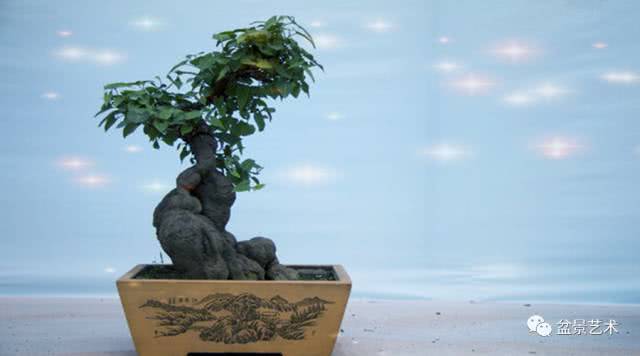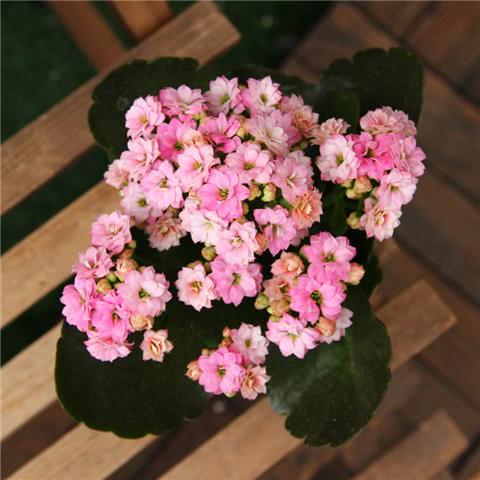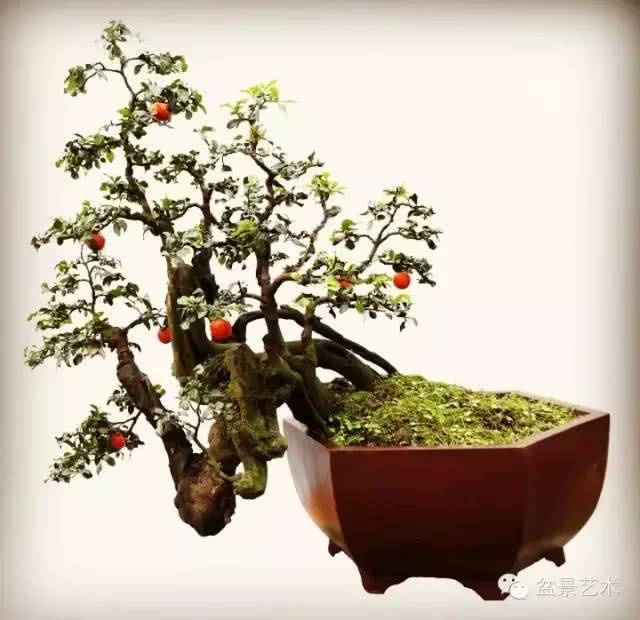Cultivation techniques of Polygonum multiflorum bonsai

Perennial herbs. Xiyang, resistant to semi-overcast, like dampness, fear of waterlogging, require well-drained soil. Tuberous roots fleshy, long oval, dark brown. Stem twining, 2-4 m long, much branched, longitudinally angled, glabrous, scabrous, lower Lignification. Leaves ovate or long ovate, 3-7 cm long and 2-5 cm wide, apex acuminate, base cordate or subcordate, both surfaces rough, margin entire; petiole 1.5-3 cm long; Ocrea membranous, oblique, glabrous, 3-5 mm long. Inflorescences paniculate, terminal or axillary, 10-20 cm long, branched, finely longitudinally angled, densely raised along ribs; bracts triangular-ovate, with protuberances, apical tip, 2-4 flowers per bract; pedicels slender, 2-3 mm long, articulate in lower part, extended in fruit Perianth 5-parted, white or light green, tepals elliptic, unequal in size, outer 3 larger dorsal winged, enlarged when fruiting, perianth suborbicular in shape, 6-7 mm in diam.; stamens 8, filaments lower wide; styles 3, very short, stigma capitate. Achene eggs (click on "special effects of Polygonum multiflorum Thunb." you can have a look.)
(1) selection of land and land preparation
1. The seedlings are raised in sandy loam with gentle hills, convenient irrigation and loose and fertile soil layer. After deep turning of 30cm in winter and weathering in winter, ploughing and harrowing was carried out many times in the following spring to pick up grass roots, branches and stones, and level the beds with fine, wide 100cm and high 10~20cm. Apply rotten barnyard manure, plant ash and other mixed fertilizer 2000kg per mu, spread evenly on the border, and then turn it into the soil.
two。 The planting site chooses the land on the edge of the hillside or in front of the house, where the soil layer is deep, fertile and loose, and good drainage. Turn over the 30cm in winter and pick up the grass roots and stones. The following spring ploughed 1-2 times to loosen the soil layer. Apply stable manure and plant ash mixed fertilizer 3000kg as base fertilizer per mu. After application, rake the ground once, make fertilizer and topsoil mix evenly, start border planting, border width 50cm, high 25cm. It can also be planted by digging holes in front and back of the house.
(2) Seedling and propagation
1. When the seeds of Polygonum multiflorum Thunb are ripe from October to November every year, the whole ear of Polygonum multiflorum is gently cut and dried, rubbed out the seeds, removed impurities, put into cloth bags or cardboard boxes and stored in a cool and dry place. In March of the second year, the seeds were sown when the temperature returned to more than 20 ℃. On the seedling border, the seeds were evenly scattered in the ditch according to the row spacing 10-15cm, and the soil was about 1.5cm thick, covered with grass and drenched through water. General seed consumption per mu 1.5-2kg. About 10 days after sowing, all seedlings can be produced. At this time, the cover grass should be removed, water should be drenched, the border soil should be kept moist, and weeds should be pulled out at the same time. Ten to 20 days after emergence, the seedlings were replenished and the seedlings were fixed by 4~5cm according to the distance between plants. At the beginning of April, 2% urea was applied once to promote seedling growth. After about 90 days, the seedling height 30cm can be moved to the field for planting. The seedling growth of this method is slow and the growth cycle is long.
two。 Cutting seedlings every March or November, choose 1-year-old sturdy vines, preferably the sturdy old vines that grow from the roots cut after October, cut into cuttings with 2-3 nodes and 15cm or so, every 50 into a small stick, the lower end dipped in yellow mud, placed in a cool place to be cut. In the nursery land of the whole border, the horizontal ditch was opened according to the row spacing 15~18cm, the ditch depth was 10cm, the cuttings were placed against the ditch wall, the plant spacing was about 1cm, and the cover soil was compacted, so that the upper cut was slightly exposed to the ground, and then covered with a layer of rice straw. Be careful not to insert it backwards. After cutting, the soil should always be kept moist and watered in case of drought, so as to facilitate the rooting and sprouting of cuttings. In the rainy season, attention should be paid to drainage to prevent cuttings from rotting due to stagnant water in the seedbed. If the weather is warm, new buds can grow 10-15 days after planting, and new roots will grow after 1 month. After about 100 days of cultivation, the seedling length is more than 15cm, and after several roots, it can be transferred to the field for planting.
3. Polygonum multiflorum can be planted in spring or summer. Spring seed has the advantages of fast rooting, high survival rate, but many fibrous roots, low yield and poor quality. The soil temperature of summer seed (May-July) is high, the sun is sufficient, the new root is easy to expand, the tuber is fast, and the yield is high. When the seedling rises from the seedling field, the seedling leaves only the basal segment around the base 20cm, the rest is cut off, and the adventitious root and potato are removed together, which is the key to high yield. When planting, first open planting holes on the border according to row and plant distance from 20cm*20cm, and plant 1 plant in each hole. After planting, the soil is compacted and drenched with fixed root water to keep the soil moist. It can be planted in a hole in front and back of the house, and 4 seedlings are planted in each pit.
- Prev

The best cutting time in autumn these three flowers can live in the soil.
Autumn is a good time for cutting flowers and plants, suitable climate, fast rooting, high survival rate, the following is to introduce three kinds of flower cutting methods, do not have to spend money to buy! The sturdy, disease-free branches of longevity flowers as cuttings, it is best to choose flowers.
- Next

Growth habits of bonsai with golden marbles
Gold marbles are resistant to low temperature, but the activity requires high accumulated temperature. The suitable period for annual growth is from April to November, and the temperature is 28-33. The range of C. The golden marbles grow slowly, and it is easy to maintain the tree-shaped proportion and not to be out of shape after forming. Because the golden marbles are female, gold.
Related
- Wuhan Hospital Iron Tree Blooming Result Was Instantly Frightened by the Gardener Master
- Which variety of camellia is the most fragrant and best? Which one do you like best?
- What is the small blue coat, the breeding methods and matters needing attention of the succulent plant
- Dormancy time and maintenance management of succulent plants during dormancy
- Minas succulent how to raise, Minas succulent plant pictures
- What are the varieties of winter succulent plants
- How to raise succulent plants in twelve rolls? let's take a look at some experience of breeding twelve rolls.
- Attention should be paid to water control for succulent plants during dormant period (winter and summer)
- Watering experience of twelve rolls of succulent plants
- Techniques for fertilizing succulent plants. An article will let you know how to fertilize succulent plants.

